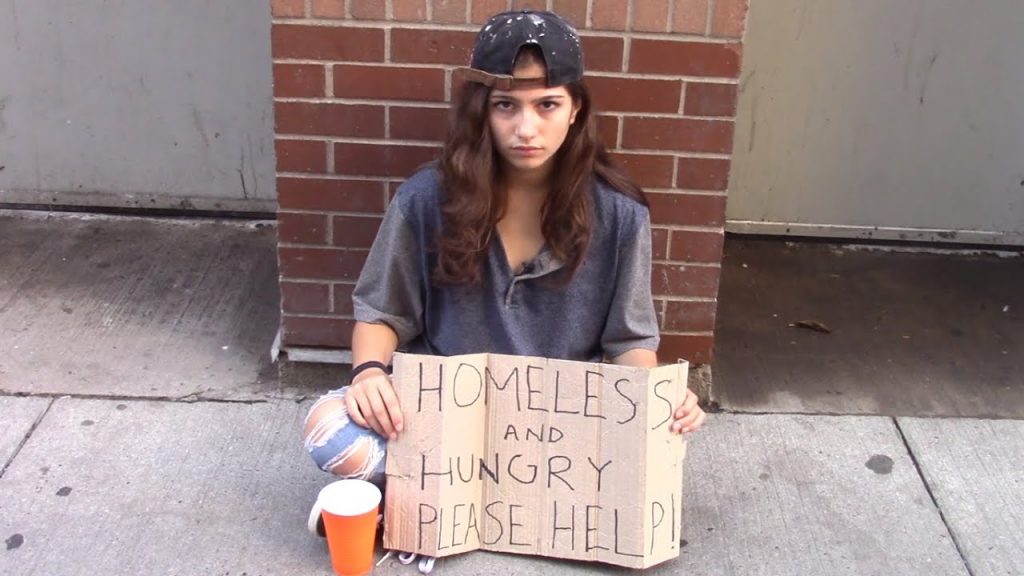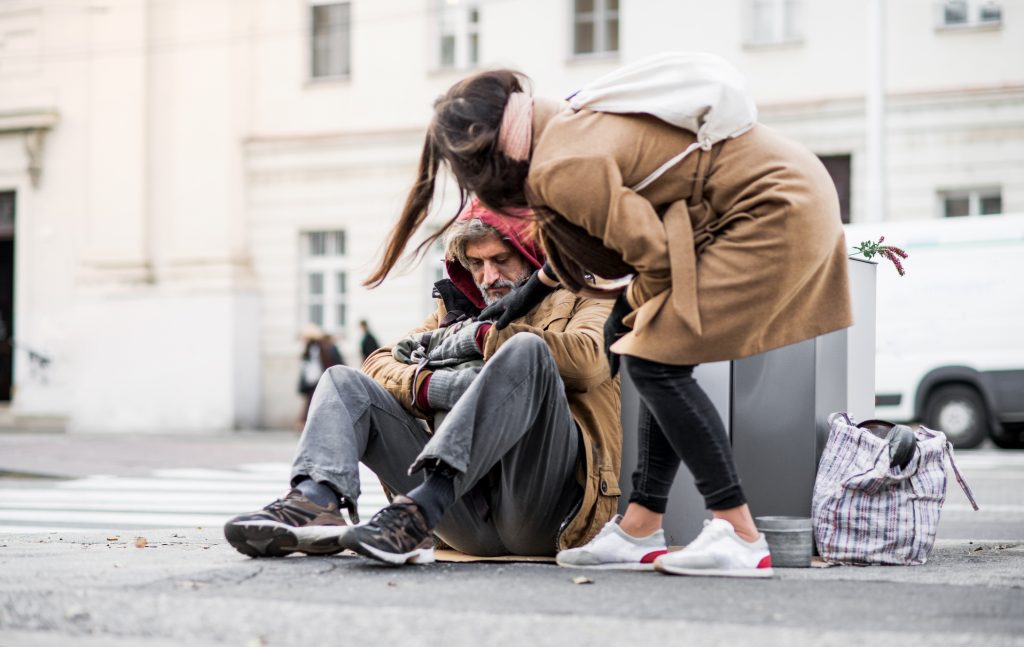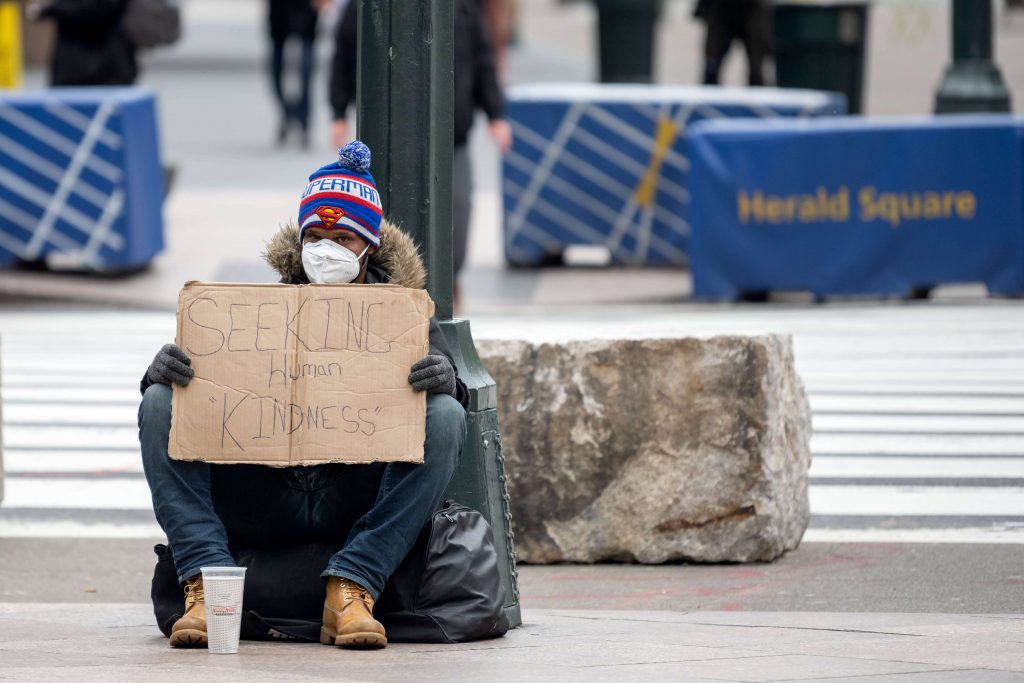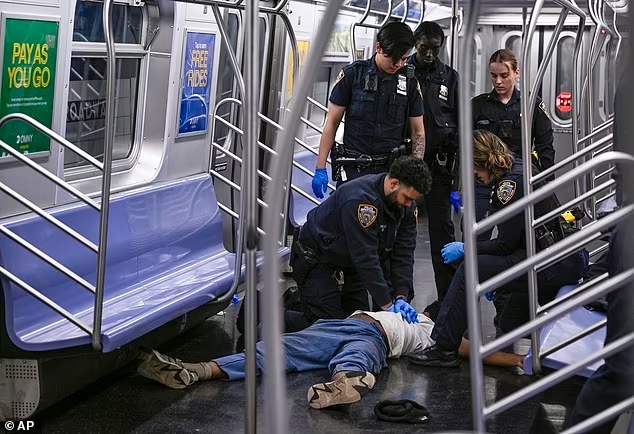While the US has the highest nominal GDP in the world, it has one of the largest population of homeless people in the world, which is such a sad oxymoron.
Housing is a basic human right and people shouldn’t be out in the streets, in the cold, when it’s cold, in the heat, when it’s hot, and in the view of everyone, exposed to various degrees of risks. Notwithstanding, homelessness in the country is on the rise.
The article highlights homelessness in the USA, as well as its effects on victims.
Homelessness in the USA
Homelessness in the United States of America has been on the rise by 6% overall since 2017.
The Department of Housing and Urban Development’s (HUD’s) definition of homelessness includes both sheltered and unsheltered people. Sheltered people live in domestic violence shelters, transitional shelters, safe havens that serve homeless individuals with severe mental illness, or hotels/motels, while unsheltered people live outdoors, in cars, in abandoned buildings, or in other places not meant for human habitation.

In 2022, homeless people in the US statistically numbered 421,392, while chronically homeless individuals numbered 127,768. These figures are record high in the country’s history of data collection, on the subject matter.
According to the 2022 Annual Homelessness Assessment Report, about 30% of homeless individuals in America were experiencing chronic homelessness, while 40% of the rough sleepers were unsheltered. 62% of the chronically homeless are sadly unsheltered.
In 2021, approximately 3.7 million people across the country were involved in what has been dubbed as “Doubling Up”. The concept has to do with a person sharing another person’s house for economic reasons. People in this situation are in the risk of homelessness.
Only five states — California, New York, Florida, Washington, and Texas — account for 55% of people experiencing homelessness. And a mere 25 Continuums of Care (CoCs) account for 47 percent of all homelessness.
All the foregoing states have a commonality on one thing, namely a massive population. Six of the top 10 cities experiencing homelessness are in California, with several in Texas.
Demographics of Homeless People in America

Available data shows that race and ethnicity essentially determine who will become homeless and the type and depth of rehousing barriers people will experience.
People of colour are more likely to experience homelessness than other groups, though homeless populations vary widely by state, and by city. Also at a high risk of homelessness are people with incarceration histories and those who have been involved with the foster care system.
Native Hawaiian and other Pacific Islanders make 1.8% of the homeless population of the US despite being only 0.26% of the North American country. They have the nation’s highest rate of homelessness at 121 per 10,000 people.
Lack of affordable housing is deemed a possible reason why Native Hawaiian and Pacific Islanders have such high rates of homelessness. Many native Hawaiians are also on wait lists for home land leases.
Twenty-four percent (24%) of all homeless people identify as Hispanic. This is higher than the national proportion of the Hispanic population: 19%.
The 2022 PIT Count data shows that though white people are numerically the largest racial group in the United States of America, they represent only half (50%) of all people experiencing homelessness in America.
Veterans also experience homelessness at a slightly higher rate than the general public. 20 in every 10,000 veterans are homeless, compared to 18 individuals in every 10,000 average citizens.
In 2022, 60.6% of homeless people were men, while women made 38.3%…
Further, increases in homelessness have been particularly pronounced among people who are transgender (178 percent increase), Asian (36% increase), American Indian (30% increase), and Latino (25% increase).
Support System for Homeless People in USA

Support in form of temporary shelters, permanent social housing and handouts are some of America’s provisions to people lacking accommodation.
Permanent supportive housing make 37% of system beds, while emergency shelters make 32% of them. These foregoing two are the most popular assistive housing methods.
Rapid Re-Housing is another and the fastest growing assistive housing measure by the country, while transitional housing is on the decline.
The transitional housing model requires people to meet certain benchmarks before being awarded with permanent housing, and has fallen out of favor given growing adherence to the Housing First strategy, which is backed by research evidence.
Permanent housing for America’s homeless has consistently trended upwards with a 26% growth over just the last five years. Despite these investments, homelessness (including unsheltered homelessness) is still on the rise. Available resources are simply not enough to ensure permanent housing for everyone who needs it.
Homeless services system investments suggest a prioritization of permanent housing options over temporary shelters. This is in line with Housing First, an approach to ending homelessness that emphasizes stabilizing people in permanent housing as quickly as possible while also making services available.
On a given night, the homeless services system provides shelter for 348,630 people. While that is commendable, it is not enough for America’s unsheltered population, which keeps growing annually.
Thus, they make a host of difficult decisions such as determining who to help and how to budget available funds among temporary shelter and permanent housing options. In this connection, families with children are often prioritized for services and are hence least likely to live unsheltered.
The United States’ unsheltered population has since 2015 grown yearly, amounting to a 35% increase over a seven-year span.

Of specific concern are people who are Asian (83 percent increase), Latino (77 percent increase), and American Indian (61 percent increase). Challenges appear to be tied to western states (California, Oregon, Washington, and Hawaii) that are both diverse and highly immersed in affordable housing crises.
While shelters are insufficient, a strange trend is going on. The shelter population has been trending downward for several years, including 2021. The COVID-19 pandemic particularly necessitated a reduced congregate shelter capacity and this consequently reduced inflow into shelter.
Prohibitive Measures to End Homelessness in America
In recent years, California and Oregon passed laws to effectively end single-family zoning.
Through its “Hiding Homelessness: The Transcarceration of Homelessness”, the California Law Review discourages homelessness in ways that include the following: bans on sleeping outside, camping, standing near a building for too long, and receiving food. There have been speculations that this will result in more stigma on individuals without homes.
Further, it also penalizes people who want to help. In October 2022, an Arizona woman was arrested for sharing food among unhoused people in a park. Before this event, she, being a retired restaurant owner, had been distributing free food for four years. She was arrested because the city had passed an ordinance that forbade people from sharing prepared food in parks for “charitable purposes.”
Notwithstanding government actions to curb homelessness, many of the cities with the highest rates of homelessness in the US are showing no signs of improving. Only 10 had smaller homeless populations in 2022 compared to their 2020 cases of homelessness.
Causes of Homelessness in the USA

The causes of homelessness are myriad. However, the primary and fundamental cause of homelessness is poverty.
According to the U.S. Conference of Mayors, the main cause of homelessness in the USA is a lack of affordable housing. They stated that while many attribute homelessness to mental health issues or substance abuse, housing costs have been shown to have a stronger correlation with a city’s homelessness rate than poverty, substance use and mental or behavioral health disorders.
The foregoing statement that housing price and not poverty is the main cause of homelessness in America comes down to what we consider to be poverty, or the definition we assign to the word, poverty. If a person cannot afford a house, besides their living expenses, in the city in which they work, might we safely conclude they’re poor?
The cycle of low pay to high cost of housing (and living in general) is another way to look at the reason for homelessness in America’s biggest cities.
In 2021, an estimated 7.1 million American households experienced severe housing cost burden; they spent more than 50% of their income on housing.
Seven million extremely low-income renters cannot get affordable homes, according to the National Low Income Housing Coalition.
Policymakers have made the crisis worse, instituting laws and zoning rules that limit the number of available homes.
In California, Los Angeles County allocated 76% of its residential land to single-family housing, while the San Francisco Bay Area allocated 85%. Historically, this has made it difficult to build more housing, as most plots are reserved for only one family, instead of duplexes or condominiums that can house many more.
Further, it is well-known that homeowners often prevent the development of proposed housing close to their properties, as they believe it’ll either disrupt the quality of their environment or negatively affect the value of their property. This behaviour is so common it got a name, “NIMBY”, meaning “Not In My Backyard”.
Recently in San Francisco, for example, protests stopped a project to convert a 131-room Japantown hotel into housing units for homeless people.

These dynamics have, to reiterate, added to the housing deficit year after year, causing the growing population to outpaced the development of new homes. Now, California has 23 available affordable homes for every 100 extremely low-income renters. This is among the worst rates in the country. No wonder California has some of the highest cases of homelessness in US.
Given the foregoing, poverty, high cost of housing, mental health issues and substance abuse have been identified as instigators of houselessness in the US. And, it is clear they’re the major causes of homelessness in America.
Nonetheless, sudden occurrences, such as life-changing injuries, health issues, loss of a guardian, parent, breadwinner or job, coupled with poverty, also cause the loss of one’s dwelling in the US.
Lastly, systemic failures such as challenges within feeder systems, and barriers to rehousing also cause homelessness in the United States of America, particularly with ex inmates, children leaving orphanage homes et cetera.
See: Extensive List of Causes of Homelessness
Dangers & Effects of Homelessness in America

Homelessness has a far-reaching effects of horror on victims. People without accommodation are not only exposed to a great deal of physical dangers (more crime, violence, bad weather, including extreme heat); they also experience varying degrees of psychological traumas.
Somehow living in the streets is a keen social stigma, that once a person falls victim of it, they get treated as a pariah. Mentally ill & homeless Jordan Neely was killed by a 24-year old passenger in New York. The police took custody of the killer. When they heard the victim was homeless man… they let the killer leave.
Women and girls living in the streets specifically experience sexual offences frequently.
Some chronically homeless people who have experienced various violence have taken it in without bothering to report to the police, and, when asked, have said the police will do nothing about it.
Read: Should We Be Kind or Unkind Towards Homeless People?
Vile people or people who perceive homelessness as a personal issue or a product of bad decision intentionally ignore, curse, attack, assault or spit at homelessness
These types of anti-social behaviours have negative impacts on rough sleepers. “There’s a certain posture that you take when you are homeless,” Ivan Perez, who lived in a tent in Los Angeles, told The Times. “You lose your dignity.”
According to a 2019 fact sheet from the National Health Care for the Homeless Council, unhoused people have higher rates of illness and die around 12 years earlier than the general U.S. population, as homelessness exacerbates conditions and increases mental strain.

Getting out of homelessness is an uphill task, as living in the streets causes devastation which may further cause poor mental health. This further makes a victim more vulnerable to substance use, reckless behavior, self-harm, and/or suicide.
Sadly, around 30% of America’s “chronically homeless” people have mental health conditions. And in 2017, the National Coalition for the Homeless found that 38% of its homeless people depend on alcohol, while 26% depend on other substances.
Also, not having a home makes getting a job difficult on different grounds including lack access to the internet or a mailing address. Without a job, one may not be able to end homelessness.
See: Definitive Details on Dangers of Homelessness
Conclusion on Homelessness in US
Homelessness is a horror that needs to be successfully addressed. In other words, no one should be homeless.
The United States lacks a cohesive, national housing policy. Homelessness solutions are currently left to state and local governments and to organizations. This creates a patchwork of efforts with inconsistent results.
According to the Coalition for The Homeless, which is the country’s oldest advocacy and direct organization for unhoused people, long-term housing assistance is the best solution.
Federal housing assistance, permanent supportive housing, and “housing first” are cost-effective and proven to reduce homelessness. The government of the United States can and should combat homelessness.



